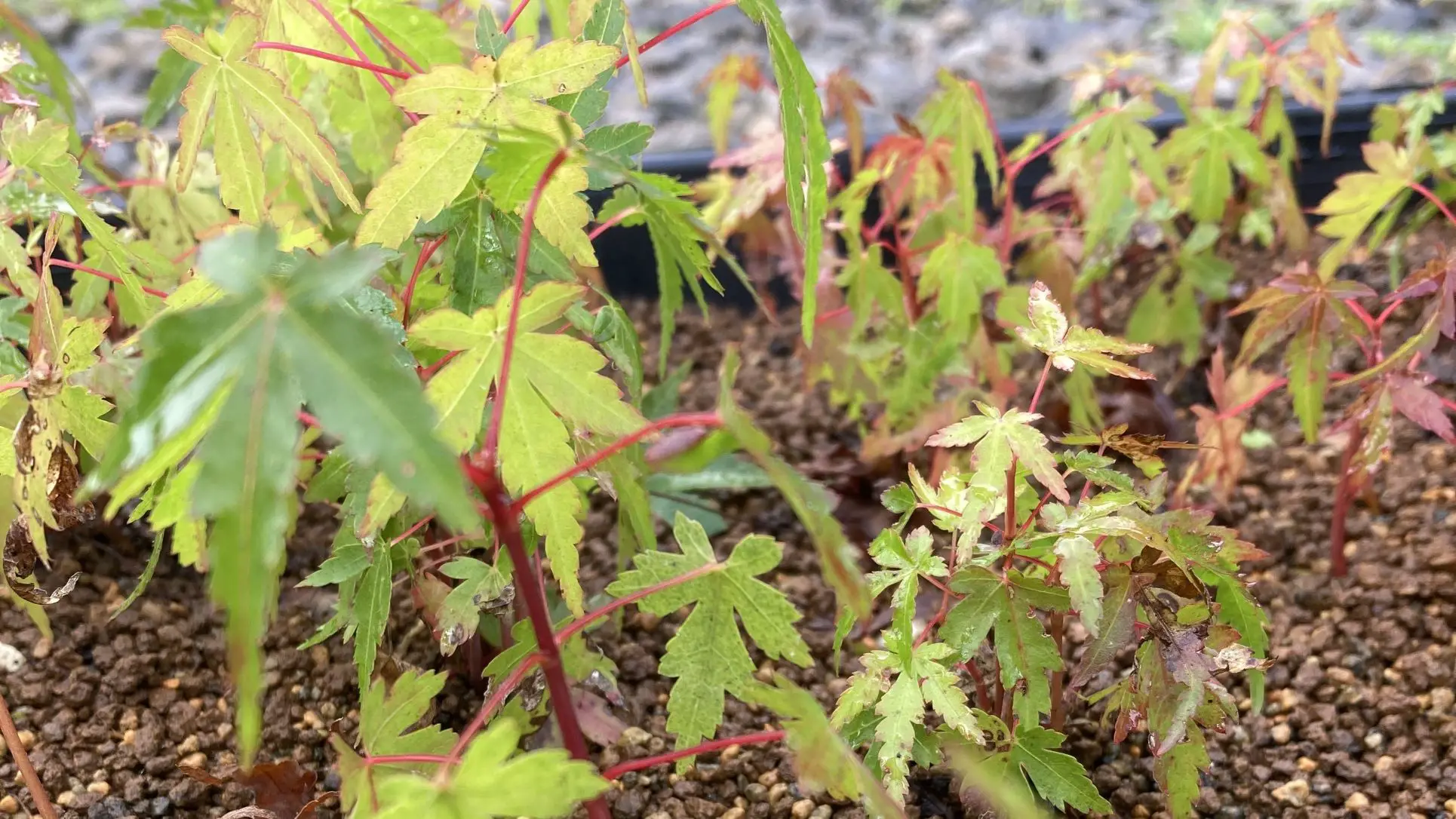Taking care of Japanese maple seedlings might feel daunting but it is not.
Keep the seedlings outside in a sunny, well-drained and well-ventilated place. Water them when the soil is half dry. Seedlings should be repotted twice during the first year after germination to promote the development of good surface roots.
Japanese maple seedlings care
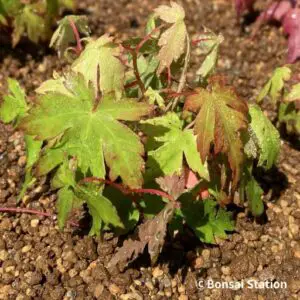
Maple seedlings
Thinning
It takes about a month and a half for all the Japanese maple seeds to sprout. When the seeds germinate, thin out the seedlings that do not grow well or are deformed in some way to improve airflow and lighting. Leave only healthy-looking ones. Pull out weeds whenever they grow.
You do not need to be very nervous about thinning because seedlings have to be repotted about a month after germination.
Placing
General placement

Bonsai shelf
Temperature influences most plant processes such as photosynthesis, transpiration, and respiration. Each species have a certain range of temperatures at which they can grow soundly and 68°F (20°C) is found to be ideal with some range on the upper side.
The Japanese maple seedlings thus should be placed in a sunny, well-drained and well-ventilated place outdoors, preferably on some kind of shelf. Japanese maple trees are photophilic (sun-loving) plants, which makes their seedlings growing indoors very difficult. Seedlings grow vigorously by exposing to sunlight and airflow as much as possible during the first period of growth.
Keep in mind that seedlings need sunlight, moisture and carbon dioxide to create their energy through photosynthesis.
Placing a seedling pot/tray directly on the ground is not desirable because the humidity from the ground prevents the pot/tray from draining water well and there may not be enough airflow.
Summer placement

When the sunlight gets stronger in summer, avoid letting the Japanese maple seedlings get the late afternoon sun. Japanese maples are prone to leaf scorch. Leaf scorch occurs when water is lost from the leaves more quickly than the roots can take it up. It often happens during the hot summer day when water is evaporated through leaves but the water absorption by the roots is less than it should be.
To avoid leaf scorch, put the seedlings under the sun in the morning and move them under the shade in the afternoon. Or cover them with a sheer cloth in the afternoon. Also, leave enough space between the pots to allow air to pass through.
When it gets cooler, move them to a place with enough sunlight all day to encourage the growth of branches and leaves until winter comes.
Winter placement
Fully-grown Japanese maple trees are resistant to cold but their seedlings are not strong enough to tolerate frost. If they are not prepared for the frost season, they may risk dying.
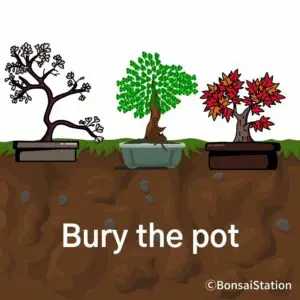
So, if you live in the frost region, bury the pots in the ground to prevent the pots from freezing. The ground soil around the pots should have good drainage. The pots should be buried at the height of the pots so that you know when the soil is dry. The seedlings cannot absorb water from the ground well through the small drainage holes in the pots.
When it gets warmer in the spring, dig up the buried pots and put them on the shelves again.
Watering

It takes about a month and a half for all the Japanese maple seeds to sprout. During this time, water the plant thoroughly whenever the surface of the soil dries.
Watering is one of the most important part of seedling care. The root system of seedlings is yet to be fully developed. As such, lack of water, even for a short period of time, can be detrimental to them. Water shortage will damage the roots and cause what little roots they have to rot.
Observe the seedlings carefully and water them when the soil is half dry. Come summer after germination, water them just a little more if the weather is very hot and dry. Avoiding strong afternoon sun might be a good idea so that the soil does not dry out completely.
Having said that, overwatering may also cause problems. Roots need oxygen to burn carbohydrates for their energy to grow and repair. With too much moisture in the soil, the roots will drown and cannot respirate, resulting in root rot.
Japanese maple seedlings need to be watered in winter as well. They may be dormant but the roots still need moisture.
To know more about common watering problems with baby bonsai, please read the following post.
Repotting
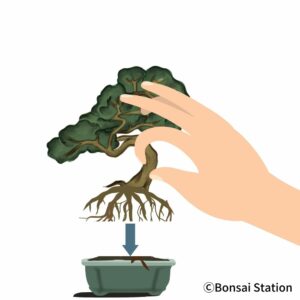
New Japanese maple sprouts need to be repotted twice in the first year: 1st, a month after germination, and 2nd, early fall (or early March next year).
First repotting should take place about a month after germination when two to four leaves come out, besides baby leaves. The roots that have grown straight downwards need to be pruned during repotting. This process is crucial to ensure that the seedlings develop good surface roots (nebari) and that the branches grow horizontally rather than the trunk growing upwards.
The second repotting should take place in mid-September. If you live in a colder region, repotting in early March next spring reduces the chance of seedling dying. These seedlings do not need to be repotted for the next 2-3 years after the second repotting. These years will be used to make a basic bonsai tree shape.
First repotting
The first repotting of Japanese maple seedlings should take place about a month after germination when two to four leaves come out as aforementioned. It is better to repot before the baby leaves fall off. These baby leaves will be an extra energy source for the seedlings when the roots are pruned.
What you need
To repot seedlings you need;
- new bonsai soil mix if you used germination soil
- growing container or unglazed clay/terracotta 3.5 inches (9 cm) pots
- sharp scissors or knife
- wooden chopsticks (optional)
Soil
The recommended soil mix for Japanese maple seedlings is as follows. Use only pea-size soil particles which facilitate the growth of fine roots and can retain water more than the larger ones.
- Akadama: 70%
- River/lava rock: 20%
- Organic compost: 10%
(Link to Amazon)
If you are interested in learning how to mix your own soil, please read the following post.
Pot/ growing tray
An ordinary clay pot is the best for bonsai training in terms of its structure, performance, and price. Clay pots have good aeration, drainage and adequate water retention, in addition to their heat absorption and dissipation ability which has a good effect on the root growth.
To know more about why clay pots are the best, please read the following post.
If you are planning a forest bonsai for the seedlings, it is better to transplant them into a pot because the trunks will not thicken too much.
Clay/terracotta pot is always better but you can use a growing container if it is more convenient. Make sure that the container is shallow and has good drainage and aeration like the one with the mesh bottom below. You can reuse the growing container you used to germinate the seeds if you do not repot them in a pot.
(Link to Amazon)
How to repot (first repotting)
- Make the soil mix. Put larger grain size soil in the bottom of the pot to improve drainage.
- Take time to pull the seedlings out of the soil without damaging the roots. Use a wooden chopstick to loosen the soil if the roots do not come out easily.
- Remove the soil gently around the roots to see how the roots are growing.
- Using sharp scissors or a knife, prune the roots that grow straight downward, leaving only the roots that grow laterally.
- Select seedlings that are healthy, without any infestation or deformation of any sort, and have fine roots that are growing well.
- Plant each seedling straight up in the soil shallow but deep enough so that it would not fall over with wind or rain. Spread the roots out evenly in all directions if you can. Leave 2 inches (6 cm) of space between the seedlings.
Cutting the roots that have grown downwards is important maintenance that must be done because it promotes the development of fine roots that grow horizontally, not downward.
Give plenty of water after repotting. Place the seedling in half shade for 2-3 days. They will take root faster if it is not exposed to strong sunlight right after repotting. Also, keep them out of the rain until it takes root.
Second repotting
The second repotting should take place in mid-September or early March next year. Seedlings for the forest bonsai should not be repotted. You have to use a larger pot for each seedling this time. Remember that the seedlings do not need to be repotted for the next 2-3 years after the second repotting. During these years, you will start making a basic bonsai tree shape.
What you need
To repot seedlings you need;
- new bonsai soil mix
- unglazed clay/terracotta 6 inches (15 cm) pots for each seedling
- wooden chopsticks (optional)
Soil
The recommended soil mix for Japanese maple seedlings is as follows. Use only pea-size soil particles which facilitate the growth of fine roots and can retain water more than the larger ones.
- Akadama: 70%
- River/lava rock: 20%
- Organic compost: 10%
(Link to Amazon)
How to repot (second repotting)
- Make the soil mix. Put larger grain size soil in the bottom of the pot to improve drainage.
- Take time to pull the seedlings out of the soil without damaging the roots. Use a wooden chopstick to loosen the soil if the roots do not come out easily.
- Remove all the soil around the roots gently. This time, you do not need to prune roots nor branches.
- If some of the seedlings are not doing well, leave them. Those that are healthy and have the potential for good bonsai are to be repotted.
- Plant each seedling straight up in the soil shallow but deep enough so that it would not fall over with wind or rain. Take time to spread the roots out evenly in all directions.
Give plenty of water after repotting. Place the seedling in half shade for 2-3 days. They will take root faster if it is not exposed to strong sunlight right after repotting. Also, keep them out of the rain until it takes root.
Fertilizing
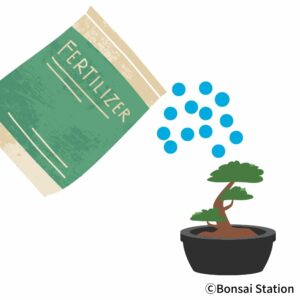
Give a very diluted liquid fertilizer after the first repotting. Make sure the seedlings are fully rooted before giving anything to them except for water. Fertilizers can be a killer to seedlings if they do not have roots to take up nutrients. Never fertilize until the seedlings are fully rooted.
Fertilize, again with a very diluted one, once to twice a month until summer. This is to give enough nutrients for seedlings to grow fine roots and quite a few branches and leaves before hot summer, when, in fact, they barely grow.
Start fertilizing again when it gets cooler and stop before leaves turn color.
Pest & diseases
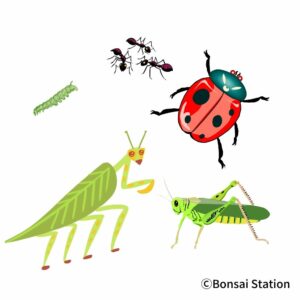
As the Japanese maple trees get older, they are exposed to various pests. But their seedlings are quite insusceptible to pests and diseases and they only get aphids from time to time. Aphids can be completely eradicated with a common pesticide you can get at a gardening shop.

